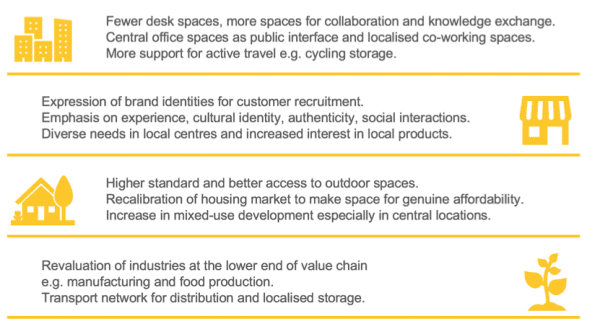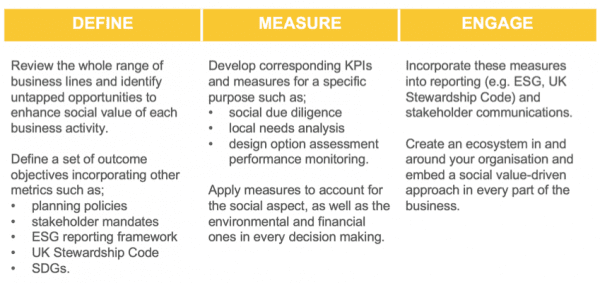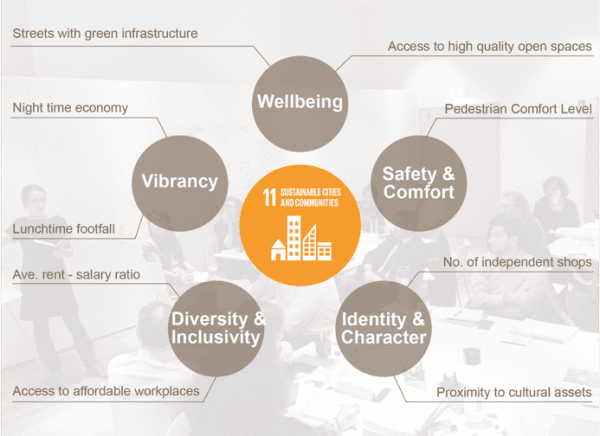What is social value?
The definition of the term ‘social value’ is still debatable. Here it is defined as ‘what is valued by society, including the social, economic and environmental wellbeing of individuals, communities and social capital.” It is closer to the notion of “shared value” which was introduced by Professor Michael E. Porter of Harvard Business School and Mark Kramer, co-founder of FSG, rather than social value defined in the context of Social Return on Investment.
What we value as society evolves over time as the society and the technology develop. The recent global pandemic shed light on some values in particular including: health and wellbeing, work-life balance, access to the nature, social interactions and equality.
How are these emerging values going to change in the future? Will they stay for the mid- to long-term? Or are they short-lived?
Social value in the built environment
For the built environment professionals, whether you are a property investor, a developer, an architect or a planner, you might be looking for credible predictions of future trends on where people want to live and work and how they shop.
These days it is extremely difficult to predict trends. Many cities have been promoting cycling as a healthy, environmentally friendly transport mode in recent years. London’s cycle hire scheme was first launched ten years ago and expanding. Now we are already talking about e-scooter hiring scheme. How can anyone tell what we will be using to move around in even five years’ time?
But the future is not something you predict. It is what we create. We are all responsible for the future and our industry has a particularly large share of that responsibility. Changes in how people interact with buildings and places are driven by values. If you want to be part of the change, you will have to understand about values first and then consider how they affect behaviours and cities.
For example, there are a lot of debates about the future of workplace. While working remotely will probably become more common, people still value social interactions, collaboration and co-creation. When offices are not about accommodating desks for employees, business owners may have to see value of their real estate in a different way. The floor area doesn’t necessarily have to correspond to the number of employees or how much chargeable amount of time was spent. To what degree do they contribute to employees’ wellbeing and subsequently their productivity and loyalty? Or how useful is your office for the brand and client experience?

Define, Measure and Engage
How do you incorporate social value into your decision-making in property investment, development, management or city planning? Social value of a particular place starts being shaped as early as when someone decides to acquire a piece of land. All players in the built environment has a role to play in creating social value.
I always recommend a three-step approach: define (strategy), measure (operation) and engage (people).
First and foremost, you will have to define social values you are trying to address as an organisation and/or within a project. Social value is a broad concept. As a built environment professional, you cannot solve all the problems in the world. It is essential to find overlaps and creating alignment between social values and your organisational missions. This might seem more challenging for private sector organisations which are structured to make profit. However, private sector organisations are also realising that such alignment help their businesses especially in the long term. The rising popularity of the Shared Value Initiative and Black Rock’s Letter to CEO by Larry Fink published earlier this year are amongst many indications that a shift towards stakeholder capitalism is gaining the momentum.
Once you define values, the next step is to develop measures against them. This is to support communicate ‘values’ amongst project teams and stakeholders and to enable objective comparisons between different scenarios and options. For example, if supporting mental health is one of the objectives in your residential development project, you might measure ‘access to open spaces’ as research shows open spaces are beneficial for mental wellbeing. You can then measure the number of open spaces within, for example, five-minute walking distances from each unit for different design options and compare them. The way you design may influence on the ease of access for individual units.
Last but not least, it is important to embed social value in all decision making by engaging people in your organisations. A shift to stakeholder capitalism requires a cultural change as well as change in wider social systems. The purpose-driven business is known to benefit business with improved employee performance. Engaging those in the organisation would help maximise the benefit of the social value-driven approach.


Author: Dr. Eime Tobari, Social Value Strategist / Director of COCREATIF Limited
